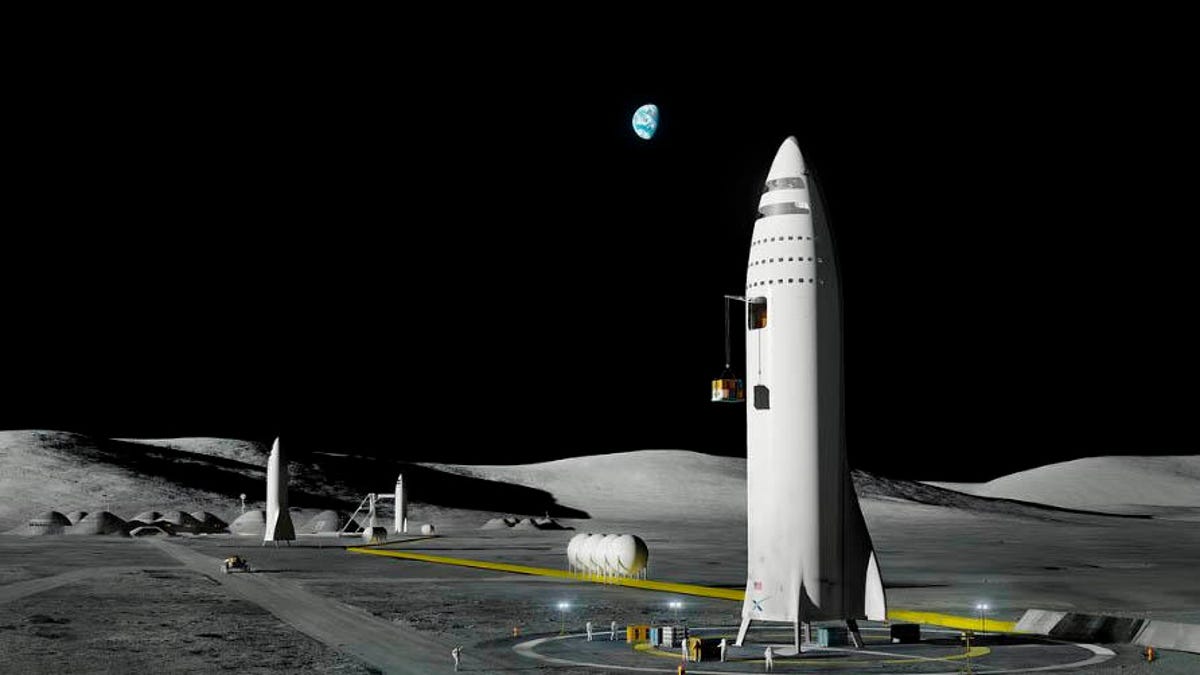SpaceX will build Mars rockets on an island full of history
Elon Musk's planned BFR Mars rocket finds a home in Los Angeles. It's oddly fitting for what could be a very historic spacecraft.

SpaceX's plans involve sending BFR to the moon and Mars.
Elon Musk's SpaceX has received a key thumbs-up to build the so-called BFR -- for Big Falcon Rocket or Big F****ing Rocket -- on an island steeped in history, both dark and inspirational.
The LA Board of Harbor Commissioners gave its unanimous approval on Thursday to permit the company to build the BFR Mars rocket at a new facility on Terminal Island at the Port of Los Angeles.
The rocket will be built at the port and not at the company's inland headquarters in Hawthorne, California, because BFR will be so large that it'll have to be transported on an ocean-going barge to Cape Canaveral, Florida, via the Panama Canal. The new rocket manufacturing facility will be built on a 19-acre parcel on the mostly artificial island that's part of the port.
That parcel isn't much to look at today. It's been mostly abandoned since 2005 when the Southwest Marine shipyard shut down. The site was first developed a century ago in 1918 by the then-named Southwestern Shipbuilding, which built merchant ships for the government.
A look at the new home of the SpaceX BFR.
According to the Los Angeles Conservancy, the company set world speed records for building ships during that early era, a legacy Musk is sure to be interested in given his tendency to push for aggressive project timelines.
In fact, at the meeting Thursday, SpaceX director of construction and real estate Bruce McHugh told commissioners he believes production of the company's big rocket at the facility could be in full swing in about three to five years. Although "Elon wants it way faster," he said.
Another company took over the shipyard in the 1920s and it went on to build 40 destroyers during World War II. At the same time, a dark era in American history also began on Terminal Island. A community of almost 3,000 Japanese and Japanese-Americans thrived on the island in the early 1940s, partly centered on a booming canned tuna industry. Those Terminal Island residents became the first Japanese-Americans to be forcibly relocated to internment camps during the war.
A memorial to the original Japanese fishing village on Terminal Island, which was bulldozed after its residents were forced to leave, now sits across the street from where SpaceX hopes to set up shop and eventually create a 200,000-square-foot rocket factory.
The memorial to Japanese fishing villages on Terminal Island.
If BFR makes it to Mars, it won't be the first much-anticipated flight to originate from Terminal Island. After World War II, American business magnate Howard Hughes brought his own pet project to the island. And in 1946 the Hughes H-4 Hercules flying boat, better known as the "Spruce Goose," made its one and only very brief flight from the port.
Surely Elon Musk hopes his Terminal Island venture will lead to many more and longer flights than it helped produce for Hughes. After all, if everything goes according to Musk's ambitious plans, the BFR rockets built there will eventually help send thousands of us to Mars.
Crowd Control: A crowdsourced science fiction novel written by CNET readers.
Solving for XX: The tech industry seeks to overcome outdated ideas about "women in tech."

